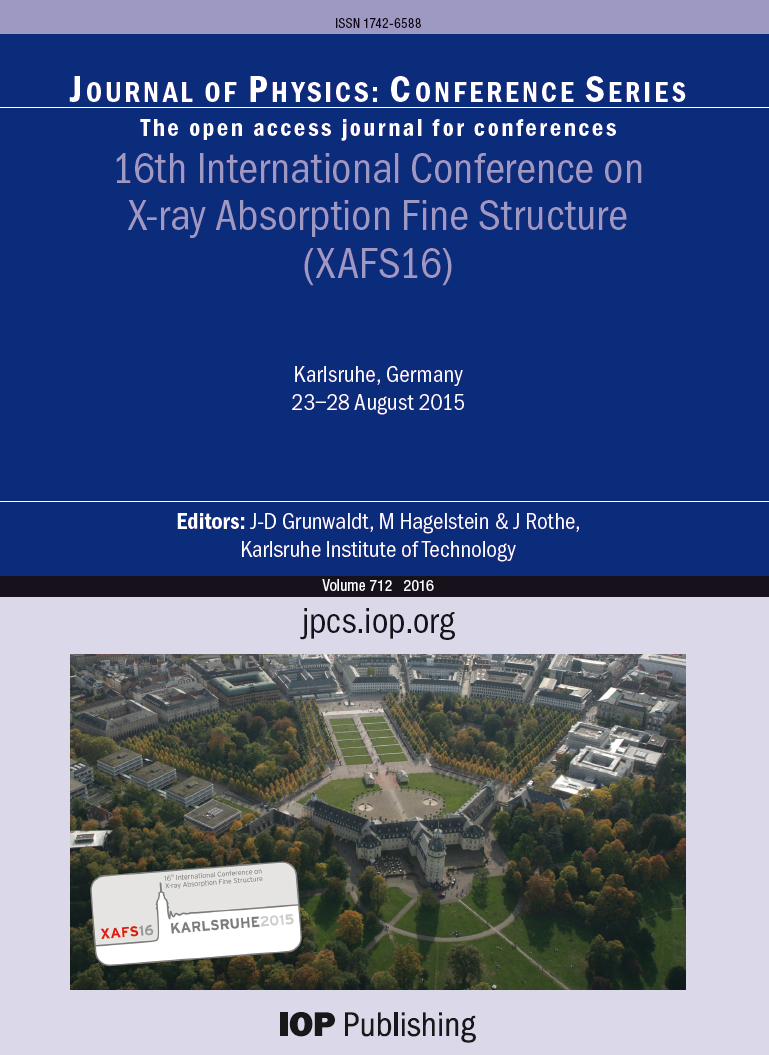As a summary of five days full of cutting-edge X-ray science, the conference proceedings including 14 KIT contributions have just been published.

After the very successful 16th International Conference on X-ray Absorption Fine Structure with more than 550 participants held at KIT last year, the conference proceedings have just been published.
Based on XAFS16 lectures, keynotes, talks and workshops, the conference proceedings include 150 contributions grouped into nine scientific fields as well as results of the satellite meeting “Data acquisition, treatment, storage - quality assurance in XAFS spectroscopy” at DESY in Hamburg.
KIT with its institutes ANKA (now IBPT), IPS, INE and ITCP/IKFT as well as DESY helped creating an outstanding collection of state-of-the-art developments and applications in X-ray absorption spectroscopy and related techniques.
Volume 712 of the Journal of Physics: Conference Series has been chosen to publish the contributions to the conference. All contributions have been rigorously reviewed and are available online.
The volume covers all aspects of X-ray absorption spectroscopy, from the latest theoretical developments to instrumentation and applications.
X-ray absorption spectroscopies are applied for the benefit of an extraordinarily broad range of applications: in-situ characterization of catalytic reaction processes, environmental contaminant and radionuclide speciation, novel developments in medical applications and forensic analysis of cultural and historical objects. Results from the German synchrotron radiation facilities including ANKA are well represented in all topics.
The proceedings start with field I “Theory, modelling and data analysis”. In the development of XAFS theory a gradual transition from semi-empirical codes to first principle codes is being observed, also encompassing the metal L-edges.
Field II “New sources and new instrumentation” shows the status of numerous existing and newly established instruments - the trend is towards faster measurements, specialized beamlines (e.g., for catalysis, energy or radionuclide research), new detectors or detectors that operate at room temperature, spatial resolution and unprecedented energy resolution with high energy fluorescence detected XAS and X-ray emission spectroscopy. The upcoming X-ray free electron laser XFEL receives major interest from the community since frontiers also of the XAFS technique are pushed ahead.
Field III “Advanced methods” includes contributions of topics like X-ray emission (XES), valence-to-core (VTC) emission spectroscopy and non-resonant XES applications.
Including 37 contributions, field IV “Chemistry, catalysis, operando and time-resolved studies” represents the biggest part of the proceedings with a variety of sophisticated methods. Several distributions concerning “Radionuclides, actinides, earth and environmental” research can be found in chapter V.
Materials science studies were split into the genuine field VI “Materials Science” and a currently very hot topic, the field VII “Energy-related materials”. In this context, not only studies highlighting structure-property relationships are published, but also exciting operando studies on batteries and energy storage materials.
The breadth of XAFS applications are shown under the topic VIII “Soft Matter and biology”. Field IX “Microscopy, beamlines, applications and cultural heritage” gives an overview of the dynamic developments in the area of spatially resolved XAS and X-ray microscopy.
J-D Grunwaldt, M Hagelstein and J Rothe, "6th International Conference on X-ray Absorption Fine Structure (XAFS16)," IOP Publishing, Journal of Physics: Conference Series, 712 (2016) 011001
